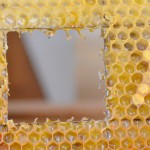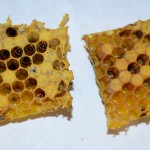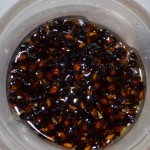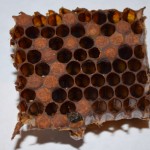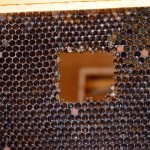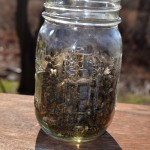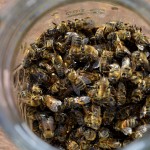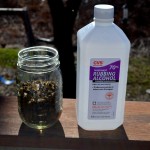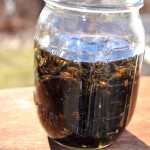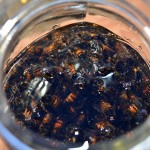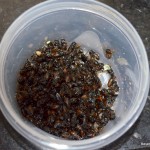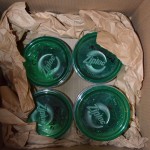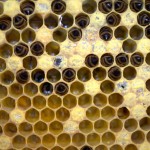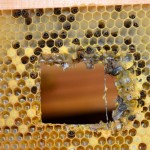Preparing Samples For Bee Disease Diagnosis or Pesticide Analysis
by Anita Deeley at BeverlyBees.com
Your colony died, you performed a hive autopsy, yet still you’re unsure what happened to your bees. If you have a large number of dead or dying colonies and want to know why, or an ever nagging curiosity about what happened that leaves you lying awake at night, or you simply want to check if your comb and equipment are safe to reuse and not contaminated with diseases or pesticides, you can send your samples away for Bee Disease Diagnosis, Pesticide Analysis, or Viral Analysis.
You will need to prepare your samples in different ways, depending on what you think the colony died from. You will have to freeze your bees and comb, or use a probe to get pollen samples to test for pesticides. To test for disease you may put a sample of bees in a 70% ethyl, methyl, or isopropyl alcohol solution or send in comb samples or probe samples from dying larvae (comb and probe samples do not need to be put into alcohol). If you have a large number of crashing colonies and also have some healthy colonies you can send in live bees for Viral Analysis. You may want to do a few types of samples to cover all options. In order to get these tests done, the bees need to be freshly dead (or still alive if testing for viruses). Bees cannot be moldy or decomposed. If you find your colony in this state, just clean up the combs and move on (although depending how bad it is, you may still be able to send in comb samples or probes for analysis).
The first thing to do after you discover a dead hive is to autopsy the colony and look for signs of disease, varroa or anything you think may have caused the colonies demise. For help, please read How To Autopsy A Honey Bee Colony here. Often times when a hive gets weakened, many different symptoms will show up as the hive is less able to take care of itself. In this situation, diagnosing what the actual killer was can be confusing. The more pieces of the puzzle you have, the easier it will be to solve the mystery of your colonies demise.
If you think there is disease in the combs or bees, or suspect your bees may have perished from Varroa or another pest, you can submit a sample to the Bee Lab in Beltsville, MD for testing. It is free for US residents and will take a few weeks to get results back. The bee lab does not test for viruses or pesticides and does not distinguish between nosema strains, but only identifies if nosema is present in your sample. What they do test for is bacterial, fungal and microsporidian diseases, two species of parasitic mites and other honey bee pests. They also test for American Foulbrood when requested.
Since Beltsville Bee Lab does not test for viruses, if you would like your bees sampled for viruses, and you have a large number of crashing but still alive colonies, as well as healthy colonies, you can pay $80 to get an Emergency Response Kit from the Bee Informed Partnership to determine what is wrong with your hives. This test requires samples from 16 hives and they want live bee samples. You can read more about it here. For an additional $680 they will also test pollen samples from 16 hives (8 healthy hives and 8 crashing hives) for 170 pesticides. Read more about this pesticide testing on pollen samples here.
After the free disease and parasite tests are complete at the Beltsville Bee Lab, they will send you and your apiary inspector a diagnosis report. If you would like to reuse your combs in another colony, without worrying if they are infected with a contagious bee disease, it only takes a few minutes to prepare and mail in a sample. Instructions for submitting samples to the Bee Lab for analysis are included below. You can also find directions on their website here.
How to Submit Samples for Bee Disease Diagnosis
To send adult honey bees, collect a sample of at least 100 bees and try to find ones that are recently dead or just dying. Decayed or moldy bees cannot be sent in for analysis. Try to collect dead bees that are in a cluster (for a winter killed hive) or on the comb, if possible, as opposed to the bottom board when sending in samples to test for mites. A number of mites fall to the bottom of the hive naturally and your mite numbers may not be accurate if you collect the dead bees from the bottom board and scoop up some of these dislodged mites along with the bees. As soon as possible, collect the dead bees and place them in a leak proof container with a lid. I like to use the Ziploc plastic containers with the screw top lids. Cover the dead bees with 70% ethyl, methyl, or isopropyl alcohol as soon as possible after collection.
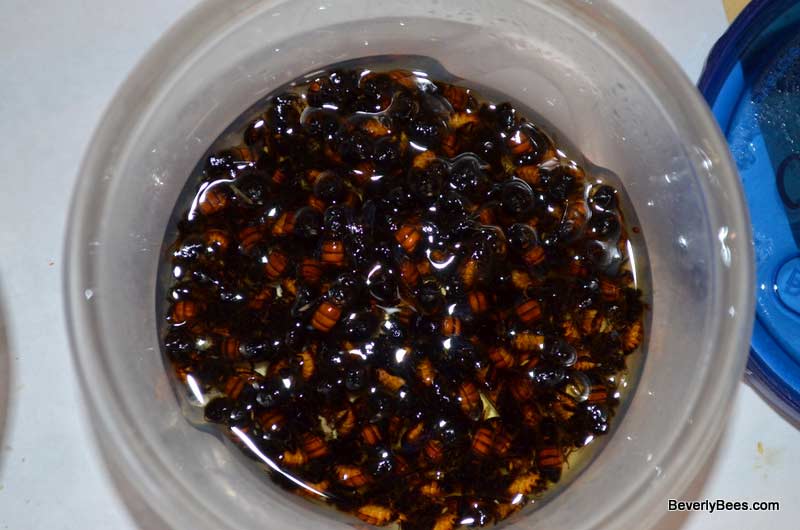
Next you will need to write a short letter to the Bee Lab telling them about your samples and what you want them to test for. Be sure to include your mailing address, phone number and email so the lab can send you the test results when they finish analyzing your samples.
Right before mailing your samples, pour off the excess alcohol and be sure the lids are tightly closed and the containers are not leaking. Pack them into a shipping box so they do not move around during transport. USPS, UPS, and FedEx do not accept shipments containing alcohol so DO NOT forget this step.
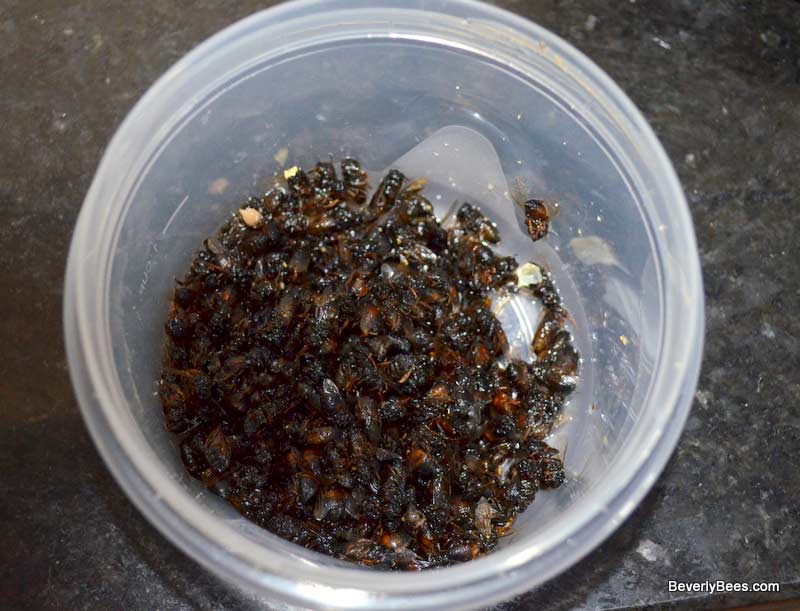
If you want to send brood samples you will need to cut out a piece of comb that is at least 2″ x 2″ and contains as much of the dead, smelly, discolored or diseased brood as possible. Be sure that no honey is included in the sample.
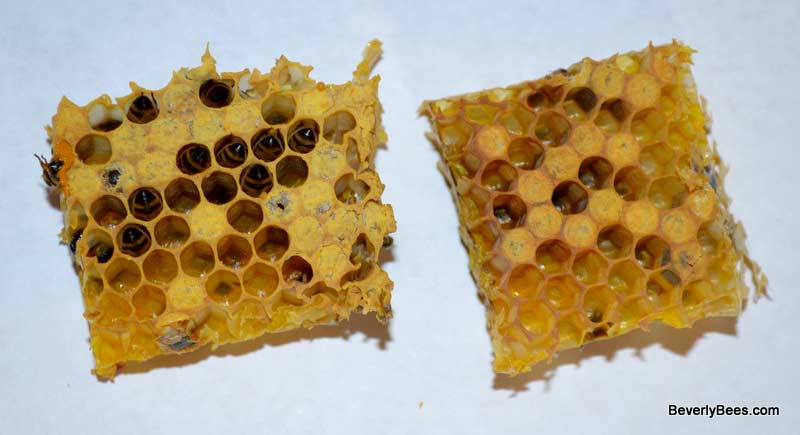
Place the comb in a paper bag or loosely wrap the brood comb in a paper towel or newspaper. Do not wrap it in plastic, aluminum foil, waxed paper, tin, glass, etc. because these wrappings can cause mold to grow on the comb and make it unsuitable for analysis. Pack the comb in a cardboard box for mailing to protect it from damage during shipping.
Instead of comb, you can also send in a probe, such as a q-tip that you use to swap the diseased larvae. It helps to send multiple samples when using this method. The probes should be individually wrapped in foil and contain as much of the larvae as possible. They can be sent to the laboratory in an envelope.
Samples Should Be Sent To:
Bee Disease Diagnosis
Bldg. 476 Room 204
Beltsville Agricultural Research Center – East
Beltsville, MD 20705
How to Submit Samples for Pesticide Analysis
If you think your bees died of pesticide poisoning you will have to prepare your bees in a completely different manner before sending them away for testing. The Columbia Food Laboratory may be able to test your bees if you know what pesticide may have killed them. The cost varies depending on the exact pesticide you are testing for. If you want to send a sample here, it is best to call them first to see if they can test your bees or bee bread/pollen for a culprit. They will also tell you the size sample they will need to do so. I was quoted approximately $270 per sample when I inquired about testing for Duet mosquito spray.
Some pesticides will disappear quickly, so it is imperative that you collect as many bees as you can and freeze them as soon as you find your dead colony. Symptoms of pesticide poisoning usually include numerous dead and dying bees outside the hive with their tongues sticking out. If you find this you will also want to freeze frames of pollen from the dead colony, in case the pollen also needs be sampled. Your samples will have to be shipped overnight on dry ice to preserve as much of the pesticide residue as possible. You will need to arrange this by calling the lab.
Alternatively, if you have 16 colonies or more and at least 8 are still healthy, you can request an Emergency Response Kit from the Bee Informed Partnership and use a probe to take pollen samples from these hives. For $760 they will test your pollen samples for 170 pesticides and live bees for viruses, whose symptoms can sometimes mimic pesticide poisoning. These pollen samples do not have to be frozen or shipped on ice. You should always call and speak to the lab before sending in samples for pesticide testing, to make sure they can test for what you are looking for, and to see what their exact requirements are. For more information please visit their web page on Emergency Response Kits.
If your sample comes back positive for pesticide you can file an incident report with the EPA here and send an email to beekill@epa.gov. Some states may also have pesticide incident reporting forms. To find out if your state has such a form click here and select your state.
Copyright © 2011-2014. Anita Deeley, BeverlyBees.com. All rights reserved.
Sign Up Now for more great beekeeping tips!
For more pictures of samples I have sent away for analysis, please view the gallery below. Just click on any picture to open the gallery and use the arrows to scroll through it. If you are viewing this post in an email or reader and the gallery does not display correctly, please view this post on my website by clicking here.

